#africanhistory
Photo

Great African Kingdoms
This collection presents a small sampling of the many great African kingdoms that rose and fell from the ancient period when Punt traded with Egypt up through the common era. Each kingdom developed a distinct culture and corresponding art and religious belief that continues to influence people around the world in the present day.
Continue reading...
105 notes
·
View notes
Text


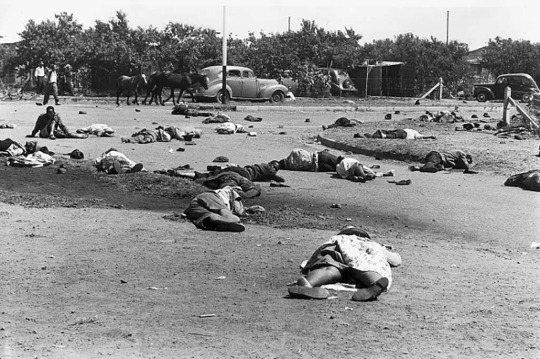

The Sharpeville Massacre occurred on 21st March, 1960, in the township of Sharpeville, South Africa. It resulted in the largest number of South African deaths (up to that point) in a protest against apartheid.
Sharpeville, a black suburb outside of Vereeniging (about 50 miles south of Johannesburg), was untouched by anti-apartheid demonstrations that occurred in surrounding towns throughout the 1950s. By 1960, however, anti-apartheid activism reached the town.
In March 1960, Robert Sobukwe, a leader in the anti-apartheid Pan-Africanist Congress organized the town's first anti-apartheid protest. In order to reduce the possibility of violence, he wrote a letter to the police commissioner to emphasize that it would be non-violent.
On March 21, an estimated 7,000 South Africans gathered in front of the Sharpeville police station to protest against the restrictive pass laws. Nearly 300 police officers arrived to put an end to the peaceful protest.
As they attempted to disperse the crowd, a police officer was knocked down and many in the crowd began to move forward to see what had happened. Police witnesses claimed that stones were thrown, and in a panicked reaction, they opened fire.
As the protesters tried to flee the violent scene, police continued to shoot into the crowd.
The police version, only 69 Africans were killed and 186 were wounded, with most shot in the back.
The Sharpeville Massacre awakened the international community to the horrors of apartheid. The massacre also sparked hundreds of mass protests by black South Africans.
On March 30, the South African government declared a state of emergency which made any protest illegal. The ban remained in effect until August 31, 1960. During those five months roughly 25,000 people were arrested throughout the nation.
The government's repressive measures intensified and expended the opposition to apartheid, ushering in three decades of resistance & protest
With the election of Nelson Mandela as president of South Africa in 1994, the apartheid system ended. In 1994, Mandela signed the nation's first post-apartheid constitution near the site of the 1960 massacre.
•••
La Masacre de Sharpeville sucedió el 21 de marzo de 1960, en el municipio de Sharpeville, Sudáfrica. Resultó en la mayor cantidad de muertes de sudafricanos (hasta ese punto) en un protesta en contra de la segregación racial.
Sharpeville, un suburbio habitado por personas negras en las afueras de Vereeniging (cincuenta millas al sur de Johannesburg), había permanecido intacto de las demostraciones anti-segregadoras que estaban ocurriendo en ciudades cercanas a lo largo de los 1950. En 1960, el activismo anti segregacionista llegó a la ciudad.
En marzo de 1960, Robert Sobukwe, un lider del Congreso Panafricano Anti-Segregacionista organizó la primera protesta anti segregacional. Para poder reducir la posibilidad de violencia, le escribió una carta al comisionado de la policía para enfatizar que seria una protesta pacífica.
El 21 de marzo, alrededor de 7,000 sudafricanos se reunieron en frente de la estación policial de Sharpeville para protestar en contra de las leyes restrictivas de paso (desplazamiento). Alrededor de 300 policías llegaron para poner fin a la protesta.
Mientras intentaban dispersar a la multitud, un oficial de policía fue derribado y muchos en la multitud comenzaron a acercarse para ver qué había sucedido. Testigos policiales afirmaron que se arrojaron piedras y, en una reacción de pánico, abrieron fuego. Mientras los protestantes estaban tratando de huir de la escena violenta, la policía siguió disparando contra la multitud.
Según la versión policial, 69 africanos fueron asesinados y 186 resultaron heridos, la mayoría disparados en la espalda.
La Masacre de Sharpeville despertó a la comunidad internacional a los horrores de la segregación racial. La masacre también provocó cientos de protestas masivas de sudafricanos negros.
El 30 de marzo, el gobierno sudafricano declaró un estado de emergencia, lo cual hizo que cualquier protesta fuese ilegal. La prohibición duró hasta el 31 de agosto de 1960. Durante esos cinco meses alrededor de 25,000 personas fueron arrestadas a lo largo de la nación.
Las medidas represivas del gobierno intensificaron y expandieron la oposición a la segregación racial, dando paso a tres décadas de resistencia y protesta.
Con la elección de Nelson Mandela como presidente de Sudáfrica en 1994, el sistema segregacional terminó. En 1994, Mándela firmó la primera constitución post segregación racial, cerca del lugar donde sucedió la masacre del año 1960.
#blacklivesmatter#blacklivesalwaysmatter#english#spanish#blackhistory#history#share#read#blackpeoplematter#blackhistorymonth#black history matters#black history#black history is world history#africanhistory365#africanhistory#black history 2023#historyfacts#black history is everybody's history#black history 365#blackhistoryfacts#blackhistoryeveryday#blackhistoryyear#black history month#knowyourhistory#like#follow#blackbloggers#blackownedandoperated#south africa#nelson mandela
93 notes
·
View notes
Text

Ramesses III
Mummy of USERMAATRE the third
#egyptian#egypt#egyptology#egyptphotography#african history#egyptshots#kemet#ancient egypt#prince of egypt#ancient history#africanhistory
6 notes
·
View notes
Text
DINKA | SOUTH SUDAN
"At puberty a dinka male receives a namesake ox after which he is named. he believes that he and the animal are one being. from calfhood he trains its horns into beautiful lyre shapes, and emulates them with his arms as he walks."
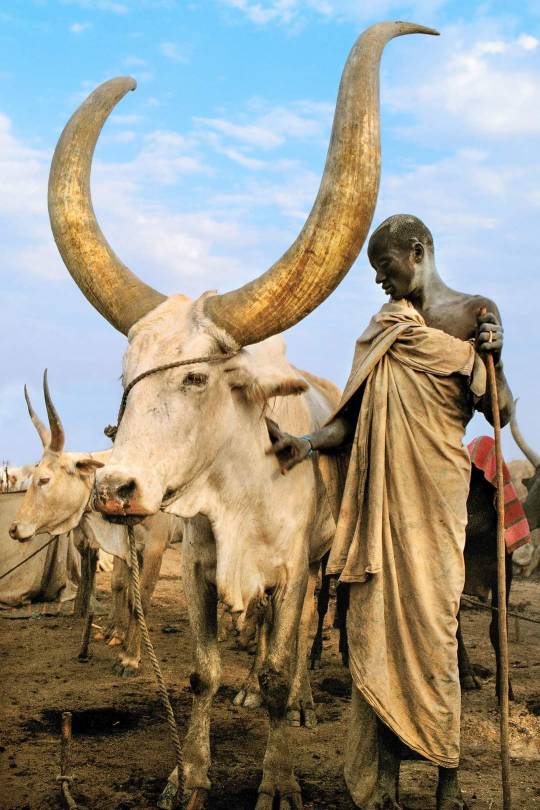
More images, videos and information about the history, customs and traditions of the Dinka can be found on "Africa Online Museum"
www.africaonlinemuseum.org
https://instagram.com/nevzat.boyraz44
Image by African Ceremonies: Angela Fisher & Carol Beckwith
#Dinka#Africa#African#Africanhistory#BlackHistory#portrait#documentary#documentaryphotography#SouthSudan#Sudan#Spotify#türkiye#doğa#travel photography#travel destinations#travel#manzara#view#natural#europe#africa
141 notes
·
View notes
Text
Yurugu by Marimba Ani - Introduction #WeAreReading
This is the first of our in-depth study of "Yurugu - An African-Centered Critique of European Cultural Thought and Behavior" by Marimba Ani. Yurugu was written in the early 1990s like so many other classic works of Black Thought. Marimba Ani is a brilliant thinker who has shown her ability to analyse and critique European thought with precision and power. Join us and spread the word about #WeAreReading!
#africanliberation#Africanphilosophy#Marimbaani#Yurugu#africancentrededucation#africanhistory#panafricanism#afrocentric#africa#africandiaspora#blackstudies#africanastudies#book tumblr#blackconsciousness#blackpower#blackthought#melanin#black history#panafrican#afrocentrism#blackacademia#black Tumblr#a
10 notes
·
View notes
Text
Osiris.

🌋

#egyptcore#egyptian gods#ancient egypt#egypt#egyptian#ethiopia#atef#OSIRIS#osirisandisis#isis#godess isis#horus#ancient art#murals#statues#love#love stories#lovers#AfricanHistory#romance#legends#egyptlovers#stars#navigation#sailing#discovery#EgyptianArt#Aset#Ausir#Kemet
9 notes
·
View notes
Text

A People with no history have no future…
15 notes
·
View notes
Text
I took a captivating trip to the Nkyinkyim museum in Ada, just a 2-hour drive from Accra. The tour, priced at 100gh per person, was hosted by a griot, a very enthusiastic storyteller whose energy transformed the tour into an exciting journey.

The tour commenced with artifacts at the entrance, revealing the wonders of Sudano-Sahelian architecture dating back to 2500BC. The structures, crafted from organic materials like red mud, clay, and bamboo, showcased the remarkable skill and eco-friendly ingenuity of our ancestors. The community engagement in the construction process mirrored their deep connection with nature.

Intrigued by the symbolism etched on the walls, I marveled at the adinkra symbols, patterns, and shapes that were not only aesthetically pleasing, but held profound meanings. The journey unraveled the cultural ties across Africa, even discovering that Sudan boasts more ancient pyramids than Egypt.
The griot animatedly shared the wisdom behind the symbols—footprints symbolizing our shared humanity, the spider embodying intelligence, the tortoise exemplifying adaptability, and the snail conveying the concept of leaving a lasting legacy. The ant emerged as a powerful symbol of collaboration and community, echoed by the Nkyinkyim symbol representing resilience inspired by nature.

There was also a structure that was described as a life sized Lukasa memory board which challenged the notion that African traditions were solely oral. It became clear that our history was archived through symbols, writings, and memory boards, providing a unique form of communication despite the challenges faced during colonial times.
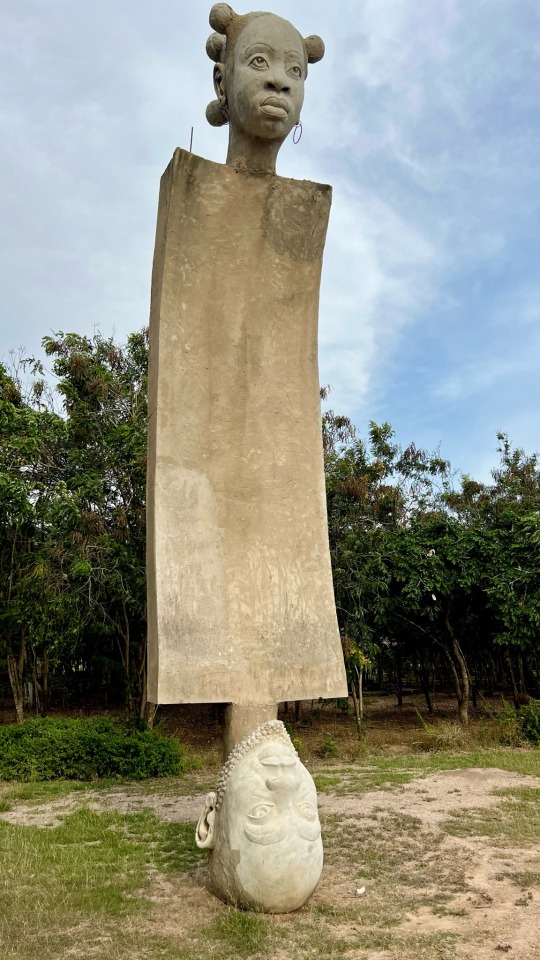
The journey progressed to a wall adorned with discs inspired by the Dikenga cross, a core symbol of Bakongo religion of the Kongo people symbolizing the cardinal points of human existence and the cycle of life.
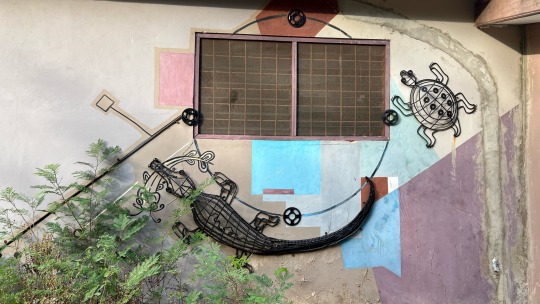
The emotional apex was the veneration site—a symbolic memorial to enslaved ancestors. Sculptures conveyed tales of capture, from shock and determination to hidden identities and interrupted hair appointments. The vivid facial expressions on the sculptures offered a poignant glimpse into their harrowing experiences and the traumatizing ways through which they were captured.
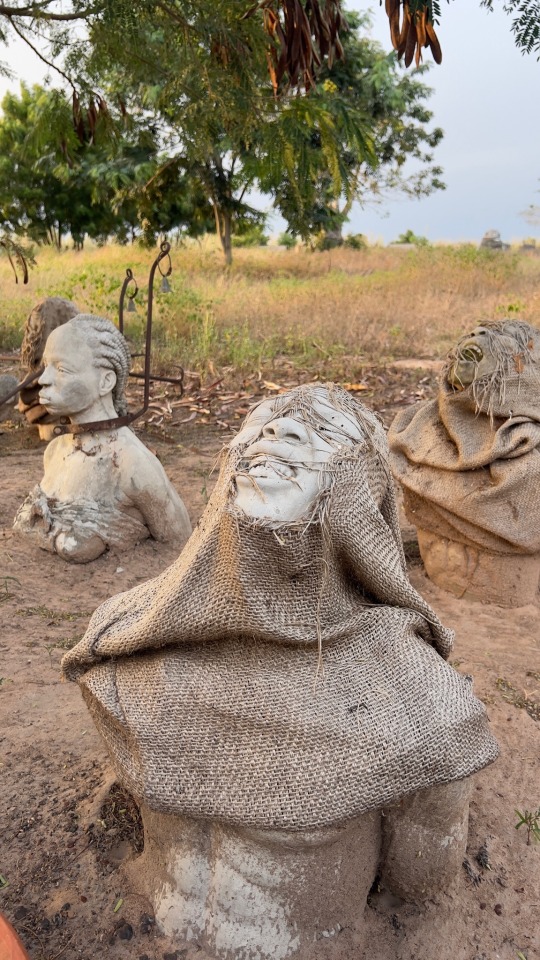

There was a wall featuring diverse writings from across the continent, such as Nsibidi and vèvè, underscoring the richness of African history. The trip left me inspired to delve deeper into our heritage, resonating with the concept of Sankofa: going back to our ancestors' ways to chart a purposeful future.
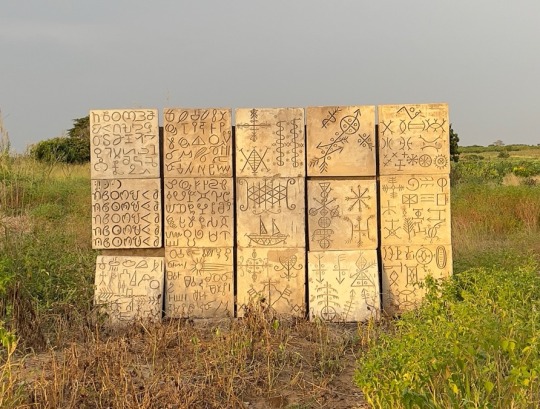

The final chapter featured paintings showcasing accomplished individuals of African descent, a testament to resilience and exceptional lives emerging from the shadows of history. This transformative experience reinforced the belief that understanding our roots definitely shapes the trajectory of our future endeavors.
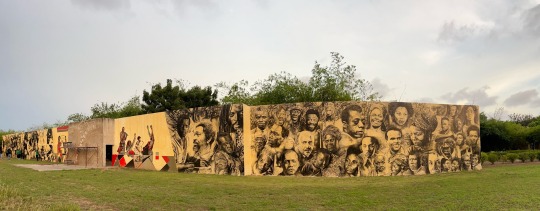
4 notes
·
View notes
Photo

As a major force behind the modern Pan-African movement and one of the founders in 1963 of the OAU, Nyerere was a key figure in African events in the 1970s. He was a strong advocate of economic and political measures in dealing with the apartheid policies of South Africa. #JuliusNyerere TheJNLC #africa #panafrican #eastafrica #panafricanism #eastafrican #tanzania #kenya #uganda #rwanda #daressalaam #eac #nairobi #zanzibar #africandiaspora #africanhistory #nyerere https://www.instagram.com/p/CoWUWKQqHJG/?igshid=NGJjMDIxMWI=
#juliusnyerere#africa#panafrican#eastafrica#panafricanism#eastafrican#tanzania#kenya#uganda#rwanda#daressalaam#eac#nairobi#zanzibar#africandiaspora#africanhistory#nyerere
15 notes
·
View notes
Text
The Mesmerizing Beauty of Zulu Clay Pots
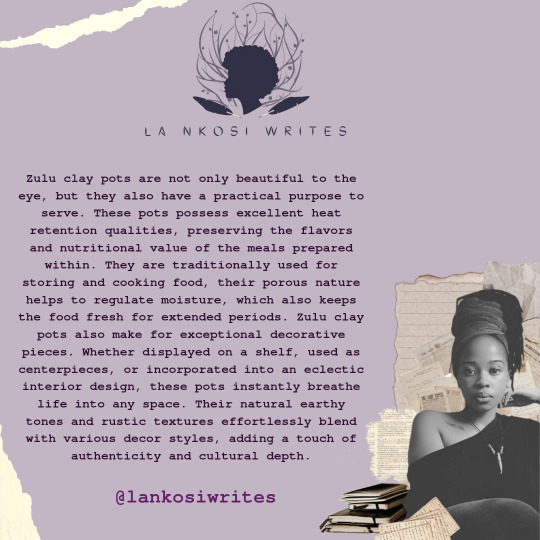
View On WordPress
#2023#africaisourhome#Africanheritage#AfricanHistory#Africanpottery#africanspirituality#Afrika#ancestralknowledge#ancestrallove#ancestralstrength#ancestralwisdom#ancientAfrica#Awakeningminds#blackcommunities#BlackGirlMagic#BlackHistory#blackwomanwriter#KnowYourHistory#lankosiwrites#SouthAfrica lankosi#Zulu#ZuluClayPots#ZuluPots
4 notes
·
View notes
Photo

It's wild how the same BLK PPL who claim "Africans Sold US into Slavery" enthusiastically celebrate BLKs enlisted in US Military, BLK Capitalist hoarding resources, BLK Celebrity Owned Fashion Labels exploiting Sweat-Shop Labor, Black Politicians advancing US Imperialism, etc.🤩 #BlackExcellence I even see BLK PPL spreading Right-Wing lies about the so-called "Illinois Purge Law," & calling for the preservation of cash bail & Qualified Immunity!🐷 So, we can conclude that BLK PPL in the US who want to emphasize "Black Slave Traders," are not concerned with Justice & the Abolition of White Hegemony & Capitalist Exploitation. They emphasize it to justify their rejection of African Solidarity in favor of Integration with the White Staus Quo.🇺🇸 "I have one question for those Negroes who always bring up how 'we sold each other into Slavery;' that question is: what did we do with the money?" -Dr. John Henrik Clarke💰 Heed: #ChancellorWilliams 📖 Heed: #LeroneBennett 📖 #BlackHistory #AfricanHistory #Slavery #TraitorsPastAndPresent #Abolition #PanAfricanism #BlackSolidarity #ChattelSlavery #AfricanColonization #Decolonization #BroDiallo (at South Side, Chicago) https://www.instagram.com/p/CiqGmSoO3LC/?igshid=NGJjMDIxMWI=
#blackexcellence#chancellorwilliams#leronebennett#blackhistory#africanhistory#slavery#traitorspastandpresent#abolition#panafricanism#blacksolidarity#chattelslavery#africancolonization#decolonization#brodiallo
8 notes
·
View notes
Text

197 notes
·
View notes
Text


On February 18th 1957, Kenyan freedom fighter, Dedan Kimathi, was executed by the British. He led the KLFA (MauMau) revolution against the brutal British occupation of his country.
Dedan Kimathi, was hanged at dawn at Kamiti, just over 48 hours after his leave of appeal had been rejected by the Privy Council.
He was executed on a charge of carrying a revolver, which, under the Emergency Regulations, was punishable by death.
The basis of Kimathi's request for leave of appeal at the Privy Council was that he was on his way to surrender, and was not in fact "captured."
He also revealed that he was taking in his arms as was required of those who surrendered. The judges, however, rejected this without hearing his lawyer, describing them as "lies”.
Kimathi went calmly to his death and was described by a senior prison official who was present at the execution as a model prisoner. "To the last he was composed and quiet," he said.
At his own request, a Roman Catholic priest spent the whole night with him in his cell.
Although many African leaders were hesistant to condemn the execution out of fear of being labelled Mau Mau sympathisers, anti colonial activists from different parts of the world were quite forthright in their criticism.
“I don’t lead terrorists. I lead Africans who want their self government and land.” — D. Kimathi
•••
El 18 de febrero de 1957, un combatiente por la libertad de Kenia, Dedan Kimathi, fue ejecutado por los británicos. Lideró la revolución KLFA (Mau Mau) contra la brutal ocupación británica de su país.
Dedan Kimathi, fue ahorcado al amanecer en Kamiti, justo más de 48 horas después de que el Consejo Privado rechazara su permiso de apelación.
Fue ejecutado por el cargo de portar una revólver que, según el Reglamento de Emergencia, se castigaba con la muerte.
La solicitud del permiso de apelación de Kimathi ante el Consejo Privado estaba basada en que estaba en camino a rendirse y, de hecho, no fue "capturado".
También reveló que estaba llevando sus armas, ya que era requisito para aquellos que se rendían. Los jueces, sin embargo, rechazaron esto sin escuchar a su abogado, calificándolo como “mentiras".
Kimathi se dirigió tranquilamente a su muerte y un alto funcionario penitenciario que estuvo presente en la ejecución lo describió como un prisionero modelo. "Hasta el final estuvo sereno y tranquilo", dijo.
Por petición propia, un sacerdote católico romano pasó toda la noche con él en su celda.
Aunque muchos líderes africanos dudaron en condenar la ejecución por temor a ser etiquetados como simpatizantes de los Mau Mau, los activistas anticoloniales de diferentes partes del mundo fueron bastante directos en sus críticas.
“Yo no dirijo terroristas. Dirijo a los africanos que quieren su propio gobierno y su tierra”. — D. Kimathi
#blacklivesmatter#blacklivesalwaysmatter#english#spanish#blackhistory#history#share#read#blackpeoplematter#blackhistorymonth#blackheroesmatter#hero#africanheritage#africanhistory365#africanhistory#kenya#knowyourhistory#knowlegde#black history matters#historyfacts#black history is world history#black history 2023#black history month#british invasion#like#follow#newpost#blackleaders#blackownedandoperated#culture
94 notes
·
View notes
Photo
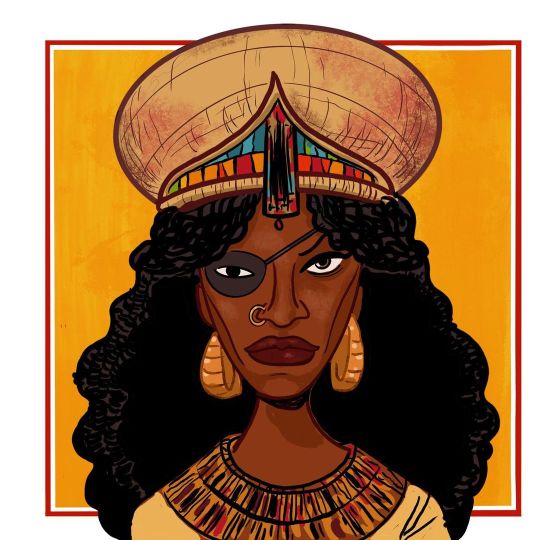
Queen Amanirenas is one of the most famous Meroitic queens because of her role in leading the Kushite army against the Romans in a war that lasted three years (25 BC to 22 BC). This war is largely responsible for halting Rome’s southward expansion in Africa. After an initial victory against Roman Egypt, Prefect Gaius Petronius drove the Kushite army from Egypt and established a new Roman frontier at Hiere Sycaminos Rome. Rome had faced a Kingdom so confident in their capacity to fight that they immediately had to agree to their terms. The legend goes that in one instance, the Kushitic envoy to Rome took a message from the Kandake. In his hands were a bundle of golden arrows and he aired the news: “This gift is from the Queen. If you want peace, this is a token of her warmth and friendship. If you want war, keep the arrows because you are going to need them.” #QueenAmanirenas #Amanirenas #womenshistorymonth #blackhistory #procreate #sketchbook #illustration #africanhistory https://www.instagram.com/p/CpQn5avv58W/?igshid=NGJjMDIxMWI=
#queenamanirenas#amanirenas#womenshistorymonth#blackhistory#procreate#sketchbook#illustration#africanhistory
6 notes
·
View notes
Photo

• CONGRATULATIONS • Your photo was chosen for us to repost ------------------------------------------ The best photo from IG @rashidedwardkalata • • • • • • Dar es Salaam, Tanzania The real Africa poverty, hunger and death have become common, The real Africa is buried beneath shanty towns life with dirt and disease, where children are forced to grow up much too quickly to survive. The Africa that is reflected in the warm sunshine that you can feel burning inside you. Africa is at the heart of different peoples, different languages, different cultures, different identities who all call this land their home. The land where moyo wangu hakuna matata My Africa is where my heart resides even when I am long gone and far away, where my mind drifts across the distance of a never-ending ocean. The real Africa can be smelt the minute you step off a plane into African soil and feel the air calling you home. The real Africa is the chaos and the calm that exists side by side as honking cars zoom past on streets that run parallel to cows grazing peacefully in a field. This is the real Africa, the one they never show. This is the place I call home. . . . . . . . . Capture by ©2022 📸@rashidedwardkalata . . . . . . . . . . #natgeo #africa #africanpoetry #africansociety #africalove #africanstories #africanhistory #canonphotography #canon #lightroom #_humaninterest #storytelling #storybehindthephoto #myafrica #friends #worldcolours_people #TheBrightContinent #streetphotography #africanportraits #celebrateafrica ------------------------------------------ Jangan lupa follow dan tag instagram @_humaninterest di foto yang kamu upload Gunakan hastag #_humaninterest Bila ada kritik atau saran silahkan tulis di kolom komentar atau DM ------------------------------------------ https://www.instagram.com/p/CmDEevySTMs/?igshid=NGJjMDIxMWI=
#natgeo#africa#africanpoetry#africansociety#africalove#africanstories#africanhistory#canonphotography#canon#lightroom#_humaninterest#storytelling#storybehindthephoto#myafrica#friends#worldcolours_people#thebrightcontinent#streetphotography#africanportraits#celebrateafrica
3 notes
·
View notes